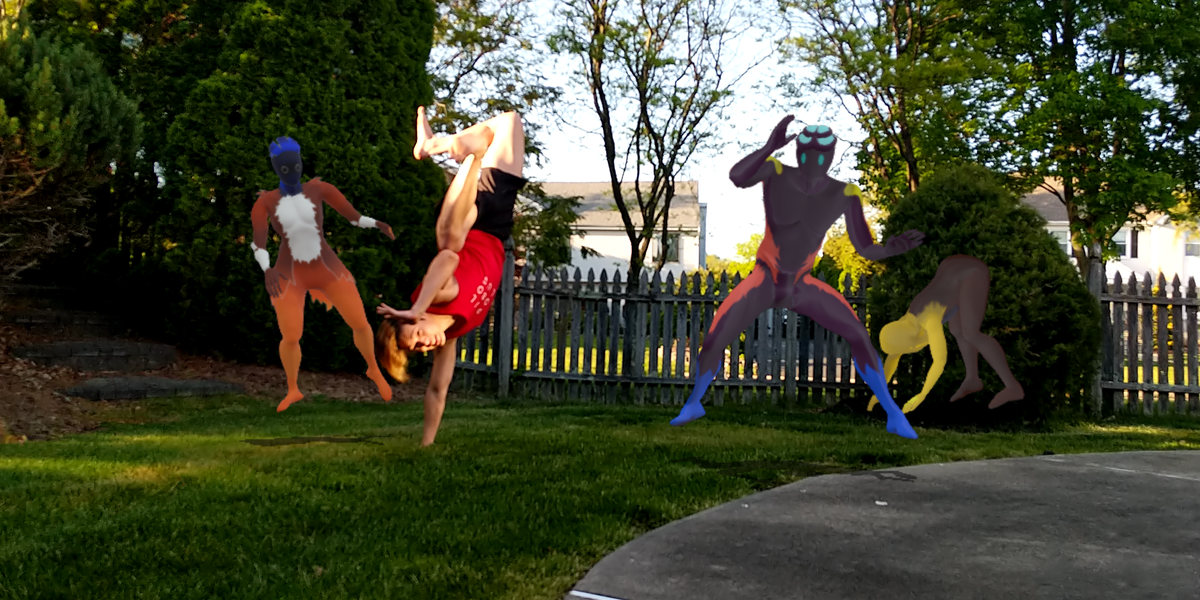Could Augmented Reality Change How We Watch Dance?
Imagine being able to digitally project the world’s greatest dancers into your home, and observe them performing virtually, in three dimensions, atop a living room table. Such is the potential of a new class of augmented reality (AR) technologies like the “Magic Leap,” a headset that allows users to superimpose digital media atop their seen reality, innovatively combining recorded dance with real space.
What is your dance background?
Creative—not competitive—movement practices have always been where I lived. When I was little (in Northern California, back in the hippie days) my dance classes had provocations like, “Stand tall, like a tree” or, “Imagine that you’re a frog, and folk dancing.”
Today, my movement practice is yoga, and I feel like I’m still hearing the “stand like a tree” part. I also studied Graham technique, improvisation and Alexander techniques. While I was never a strong performer, I am a strong enthusiast.
Tell us about your collaboration with Pilobolus.
Pilobolus and MAP started playing together, doing motion capture and dreaming up augmented and virtual reality interpretations of their work over a year ago. I love their creative process, the emotional accessibility of their work, and how adventurous the artistic directors Matt Kent and Renee Jaworski are.
Youdancewedance.org
(now also available for smartphones) is a good thing for people during this weird moment where everyone is stuck at home. We have a vision that it will foster a different kind of relationship between audiences and theater performance over time.
Next up, it will be part of the “Art Safari” they are staging in their (safely socially distanced) Five Senses Festival this summer (July 31-Aug 2) in Washington Depot, Connecticut. We really made this with kids and families in mind, and I hope people enjoy it. It basically reminds you to move your own body!
How has augmented reality and motion capture changed your view on what choreography is?
For me, augmented and virtual reality have honed my eye, and given me an opportunity to spend additional time with phrases in the context of motion capture. It’s similar to how a dancer might live with movement in their body. It provides an opportunity to revisit live movements spatially, instead of through a flat YouTube video or even on a proscenium stage. It’s about being able to look at it giant, and then look at it tiny, and from all angles. I adore it. I’ve always wanted people to view dance with the feeling of exhilaration and joy I’ve had as a watcher in the rehearsal studio.
Movement, to me, is the most beautiful, direct and instinctual form of human communication. I believe motion capture gets at the essence of who we are in a way that is elegant, accessible and impactful. Especially in this moment when so many people forget that their body is a beautiful, creative tool.
If COVID keeps theaters closed for the foreseeable future, might AR maintain a sense of dancerly liveness in performance?
Currently, live performance spaces being shuttered, it’s important to think of ways that spatial computing, three-dimensional capture and immersive presentations can support the work of creators who work with bodies. We can explore potential new audiences and performance opportunities right now.
Once upon a time, there was less of a distinct line between dancers and watchers. I still believe that can be the case, and that it’s good for non-experts to have as many chances to be inspired by experts as to move their own bodies.
Are there things that folks can do at home to explore in this new, virtual choreographic horizon?
Dance is one of the most loved, watched and shared forms of social media content that there is. So, share dance! I’m always up for more making and doing and moving, whether it’s captured or not. There are emergent forms of dimensional capture and there are also off-the-shelf ways to turn flat videos spatial. They’re not perfect, but they’re getting better and better.
Who are some other people working in this space that you think Dance Magazine’s readers should know about?
There is a world of immersive makers out there. The media is ripe for it, and as creative technologists, we know that it is dancers and choreographers who are the collaborators we need as we create experiences and technologies of the future that honor embodiment. Some who come to mind are Heidi Bosivert, Michelle Ellsworth, Christine Marie and Gilles Jobin.
How can dancers prepare for this sort of work in the future?
Having inventive improvisational and collaborative skills is a good start. That’s part of why Pilobolus translates so beautifully to virtual space. Motion capture can be used in as many ways as there are movers. There’s no prescribed form. We have had lots of situations when people are doing complex partnerings, but someone’s data for their head ends up attached to someone else’s knee. You learn to work through!





